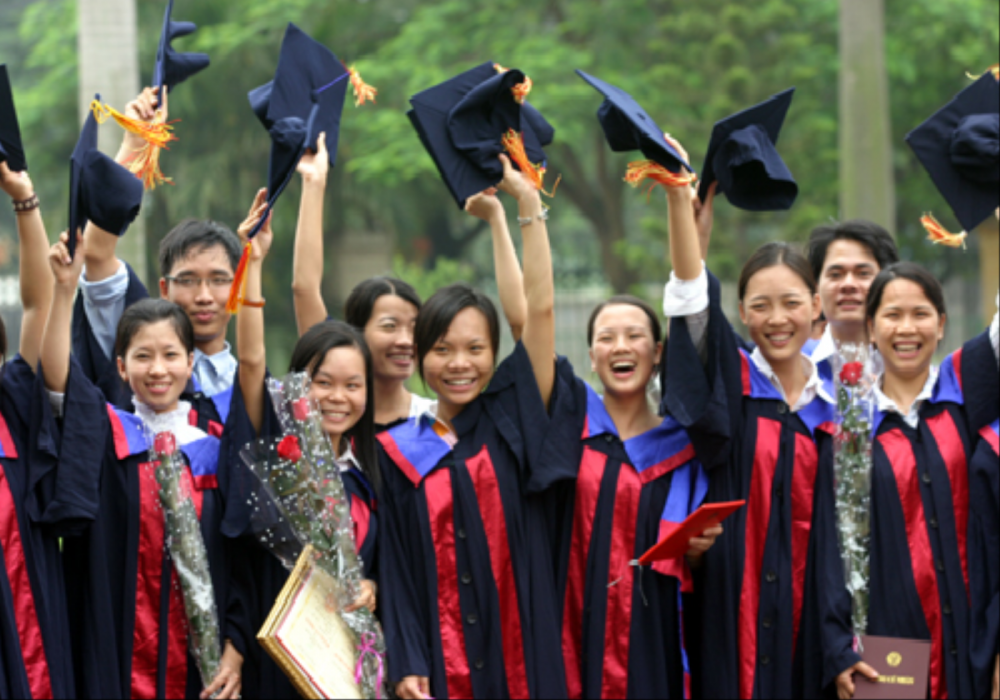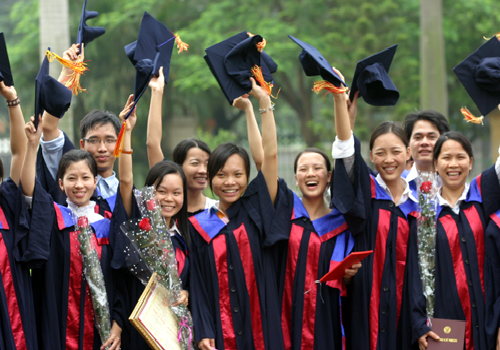Transforming higher education in Vietnam
Global education

Vietnam is a rapidly growing and dynamic country with a relatively young population. It has seen a remarkable increase in the number of students entering higher education in the past 20 or so years.
The Vietnam government has also responded to the need to meet the employment demands of various industries and professions by increasing funding for education. This has seen an expansion in the number of vocational education and training (VET) providers as well as universities to meet the pressure for skilled workers, especially in areas such as information and communications technology (ICT), tourism and healthcare.
However, there is still some way to go before Vietnam’s education system can be said to truly provide what is required to meet the country’s emerging economic and social demands.
Higher education in Vietnam includes specialised colleges, teacher training colleges, public and private universities as well as institutions governed by cooperatives that are wholly funded through tuition fees.
In the past 10 or so years, there has been significant growth in the number of private for-profit higher education institutions that tend to specialise in niche demand fields, such as accounting and ICT. Some of these are undeniably of lower academic quality.
To date, no Vietnamese universities are ranked in the world’s top 1,000 universities (based on well-known world university rankings). The regulatory environment is highly bureaucratic and centralised through the Ministry of Education and Training (MOET), which has authority over education, including higher education.
MOET decides education policy and implementation expectations that extend to rules about student admissions as well as what is included in the taught curriculum and the setting of textbooks. MOET is gradually handing more independence to higher education institutions. However, progress to date remains rather gradual.
Curriculum reform
The curriculum delivered, on the whole, does not adequately prepare graduates with the competencies or attributes required by employers. It is a curriculum that emphasises rote memorisation, is textbook-centric and comprises incessant assessments and high-stake examinations.
Many VET and university courses do not feature work-based learning opportunities or industry placements, so omit valuable, actual practical experience from students’ learning.
Approximately only 30%-35% of students are admitted into higher education, which occurs via students passing very demanding exams. Private conversations with university officials reveal that parents desperate for their son or daughter to gain entry to a university offer bribes to university administrators to ensure admission.
However, the government is acutely aware of the need to make some essential changes to its education system, including the reliance currently placed on examinations as the key measure of students’ aptitude, and so bring it more in line with practices in other developed countries.
Accreditation
One major government reform is the establishment of a National Accreditation Council, under the umbrella of MOET, which oversees the accreditation process higher education institutions must undergo. The latter is based on an extensive institutional self-assessment with clearly spelt out criteria provided by MOET, as well as an external audit that leads to accreditation for five years.
Accreditation is compulsory for all higher education institutions in Vietnam and it is also mandatory for them to have their own internal quality assurance unit. It has only been in the past couple of years that an eight-level National Qualifications Framework (NQF) developed by MOET has been implemented, bringing Vietnam in line with many other countries that have had such a framework in place for many years.
The NQF provides guidance to higher education about the expected standard of student learning outcomes at different levels of education, from certificate (Levels 1-3) through to doctorate (Level 8).
The NQF is aimed, amongst other things, at standardising the level and quality of what is offered or delivered to students and at improving international recognition of Vietnamese qualifications to facilitate transferability of these qualifications for student educational mobility.
Teacher quality
One of the key objectives included in the government’s reform plan for higher education is to improve the teaching quality of academics employed in higher education. A goal set by the government is that all academics will be at least masters- and preferably doctoral-qualified by 2020.
However, it remains a considerable challenge for Vietnamese universities to recruit qualified academics and this is not helped by the relatively poor salaries they receive and by the more highly qualified ones being able to secure much more highly paid employment in industry.
Perhaps the biggest challenge of all, however, continues to be the need for real change to occur in the teaching-learning approach used.
I have been involved in consultancy work with a number of universities in Vietnam on a regular basis over the past six years. In that time, I have heard about and seen some of the government reforms to higher education being implemented. It is fair to say that work towards significant improvement is encouraging but variable and perhaps a little too gradual.
It is going to take time and much more than that to change how students receive instruction and how teachers deliver that instruction to them. It is a big ask of university students who are used to years of being required to memorise facts – often from a single textbook – and then regurgitate those same facts in a formal high-stake exam, to suddenly engage in problem-solving, critical analysis and creative initiative.
It is just as big an ask of academics, who themselves are products of this approach, to design a curriculum and include activities that provide opportunities for young learners to work in teams to provide creative solutions to real-world problems. Many academics find this incredibly difficult and so tend to resort to what they know and have always done.
Alternative ways of teaching
What is interesting to observe, however, is that a substantial number of these academics have spent time studying in the United Kingdom, the United States, Australia and Europe. They are aware of alternative ways of engaging in teaching. What they have learnt overseas should not be seen as separate or irrelevant to the teaching-learning process in their own country.
There is a leadership role for those who are slowly making the required changes to the teaching-learning process, the ones who are building curricula focused on active learning and supporting students to expand their conceptual and intellectual knowledge, understandings and skills. They are demonstrating successful alternative ways to the current textbook-centric, facts-driven curriculum.
There is much potential to grow the beautiful and culturally rich country of Vietnam socially and economically via its education system. It will take a little more time for the government reforms to really take hold and for the Vietnamese higher education sector as a whole to realise broadly-based positive change.
Credit to Dr Nita Temmerman is a former university pro vice-chancellor (academic) and executive dean of the faculty of education at the University of Southern Queensland, Australia. She is currently chair of two higher education academic boards in Australia, visiting professor to Ho Chi Minh City Open University and Solomon Islands National University, as well as invited specialist with the Hong Kong Council for Accreditation of Academic and Vocational Qualifications, invited external reviewer with the Oman Academic Accreditation Authority, registered expert at the Australian Tertiary Education Quality and Standards Agency, and a published author.
